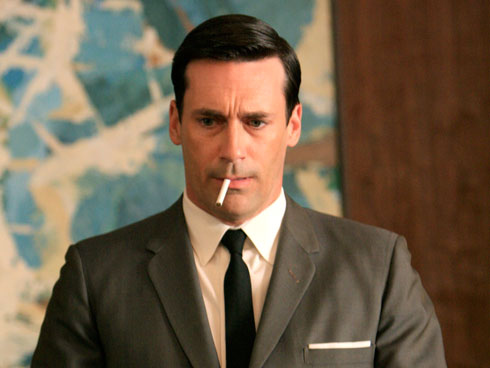America’s largest supermarket operator is shrinking.
Kroger Co., the owner of over 20 grocery chains and other retailers, is closing supermarkets and jewelry stores, as well as selling hundreds of convenience stores, while simultaneously hitting the brakes on new openings that the company had already publicly announced.
It's a major U-turn for a serially acquisitive company that has become the nation's second-largest retailer, behind only Walmart in total U.S. sales. While cutting its store count, Kroger is prioritizing $9 billion in spending over three years on initiatives like splashy technology upgrades at its remaining stores.
The upheaval is just the latest in a grocery industry grappling with Amazon’s aggressive advances into its territory.
The Cincinnati-based retailer sold 762 convenience stores to British firm EG Group last month, is shutting an undisclosed number of jewelry stores and has shed net total of 13 jewelers in the first three quarters of 2017, and has closed or is closing at least 18 of its grocery stores since the start of the company's fourth quarter, a development one community leader describes as a “crisis.”
The supermarket closures are a departure for Kroger from recent years. Their store count grew in 2015 and 2016, and there was no store reduction in the final quarters of those years. Combined with the suspension of planned openings, and the company’s explanations, it becomes clearer that this isn't normal annual pruning.
Already in the first three quarters of Kroger's fiscal year that ended February 3, there's been a net closure of six grocery stores.
Kroger is suspending multiple — but not all — store openings and other major projects, such as store remodels, replacements and expansions.
A Kroger spokesperson declined to comment for this story, citing a quiet period before the company’s annual earnings report due out Thursday morning. However, in earlier statements made to local media, one representative said, “Company wide, the pace of construction has slowed down.”
Another official described a “shifting of capital expenditures in the short term from brick and mortar to focus on the customer experience in our existing stores, e-commerce and digital technology.”
The supermarkets that are shutting down are just a fraction of the more than 2,700 that Kroger operates, but any grocery store that closes has an impact on the neighborhood it served. Some closures are devastating.
Two supermarkets have closed in Peoria, Ill., a city once considered synonymous with Middle America. Kroger says neither store had been profitable in over 15 years. Two food deserts have been left in their stead.
“I am not exaggerating when I say we are now in a food crisis in this zip code, 61605,” says Peoria City Councilwoman Denise Moore. “That is one of the most hard-pressed zip codes in the country, let alone the state.”
“There is no supermarket in the entire district,” she adds, referring to her constituency that stretches along the Illinois River and cuts through Downtown Peoria. The district was home to Caterpillar Inc.’s corporate headquarters until earlier this year.
Moore worries about residents not only losing access to healthy food, but also to the store’s pharmacy and Western Union facility, where people without bank accounts can pay their bills.
The company is also shelving store expansions at two of Peoria’s other Krogers.
Another city, Memphis, was also hit by two Krogers closing. The city's mayor, Jim Strickland, took to Facebook to say he was “disappointed by Kroger's decision.”
In a potential reference to the predominantly African-American communities the stores served, he added that “these neighborhoods are no less important than any other neighborhoods in our city, and citizens who live there absolutely deserve access to a quality grocery store.”
The impetus for the closures may be financial, but residents have noticed the affected neighborhoods’ demographics.
In Peoria, one of the closed stores, on Wisconsin Ave., served a majority-minority neighborhood. The closest supermarket now is a Save-A-Lot discount grocer in a majority-white neighborhood two miles away. Walking there from the closed store would take 44 minutes, according to Google Maps.
The other Peoria Kroger sat just outside the edge of city limits, on a highway across from a predominantly black neighborhood where 36 percent of households and 83 percent of families with children under five live below the poverty line. The store is a mile and a half from the next-closest supermarket in a predominantly white neighborhood.
Kroger didn't respond to a Memphis news station that asked last month about an effort to boycott the company, but Kroger had previously stated that each closing store in the city had lost more than $2 million since 2014. The company similarly declined to respond for this story, citing the quiet period.
In other cities, Kroger is closing in different types of neighborhoods. One location, a concept store called Main & Vine, closed in a predominantly white neighborhood in suburban Seattle where the median household income is $82,000. The store went dark less than two years after it opened.
Kroger is said to be eyeing potential e-commerce acquisitions. Online bulk seller Boxed reportedly rejected a bid from Kroger, and the company was said in January to be considering an offer for Overstock.com. Kroger was also reported to be weighing a partnership with Alibaba, China's largest e-commerce site.
At its supermarkets, Kroger is rolling out a scan-as-you-shop system to 400 stores called “Scan, Bag, Go.” Available as a phone app or a dedicated handheld device, it will eventually let customers transact their own payments, too, so shoppers can just walk out with their items.
The sudden ramp-up of “Scan, Bag, Go” came after Amazon teased Amazon Go, Amazon’s newly opened convenience store with “just walk out” technology, which uses cameras and sensors to eliminate checkout lanes.
But just because retailers offer new technology doesn't mean shoppers will use it. Earlier pilots of grocery scanning apps failed to gain traction. And mobile payment systems like Apple Pay and the newly rebranded Google Pay aspire to be the future of commerce, but three years after they first launched, everyday usage remains stubbornly low, according to data from PYMNTS.com, an industry journal.
Kroger is also expanding its online grocery service, called ClickList, which is now available at over 1,000 of the company’s approximately 2,800 grocery stores. Amazon is rolling out free two-hour shipping for Prime members at Whole Foods.
Kroger-owned stores known to have closed or be closing since the start of the company's fourth quarter include:
Tucson, AZ: Fry’s at 3920 E Grant Rd.
Savannah, GA: Kroger at 14010 Abercorn St.
Peoria, IL: Kroger at 2321 N Wisconsin Ave.
Peoria, IL: Kroger at 3103 W Harmon Hwy.
Mitchell, IN: JayC at 1240 W Main St.
Jackson, MI: Kroger at 3021 E Michigan Ave.
Clarksdale, MS: Kroger at 870 S State St.
Charlotte, NC: Harris Teeter at 16405 Johnston Rd.
Columbus, OH: Kroger at 3353 Cleveland Ave.
Portland, OR: Fred Meyer at 5253 SE 82nd Ave.
Memphis, TN: Kroger at 1977 S 3rd St.
Memphis, TN: Kroger at 2269 Lamar Ave.
Brownwood, TX: Kroger at 302 N Main St.
Plano, TX: Kroger at 4836 W Park Blvd.
Gig Harbor, WA: Main & Vine at 5010 Point Fosdick Dr. NW
Cudahy, WI: Pick ’n Save at 5851 S Packard Ave.
1000 store closures have been announced in the past two weeks. Follow @mitchnolen to get updates and @Petition for news about disruption, generally.























